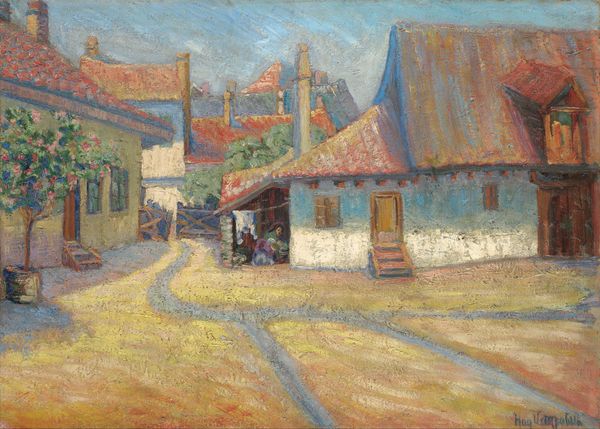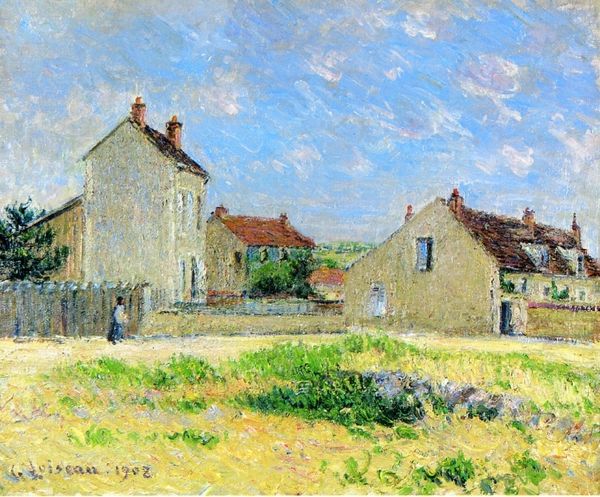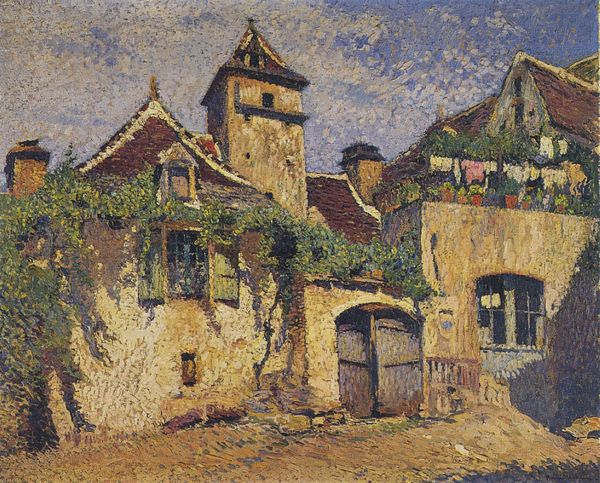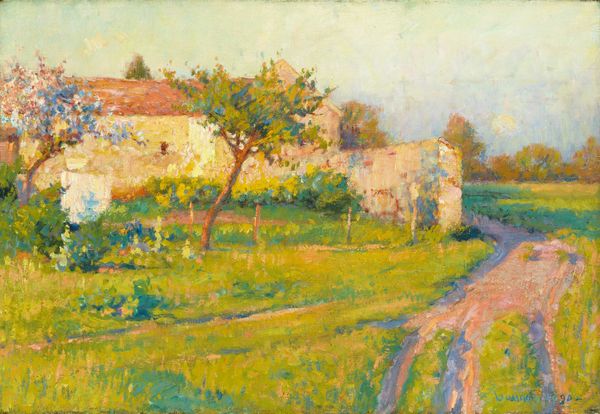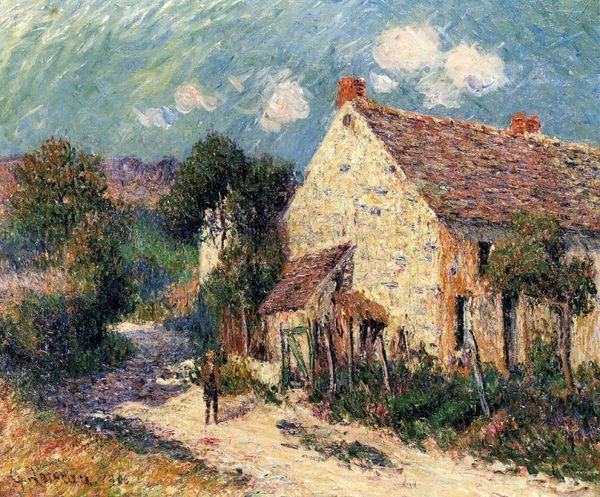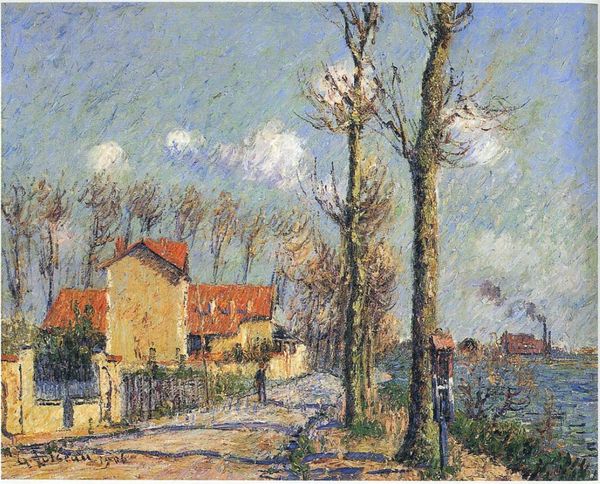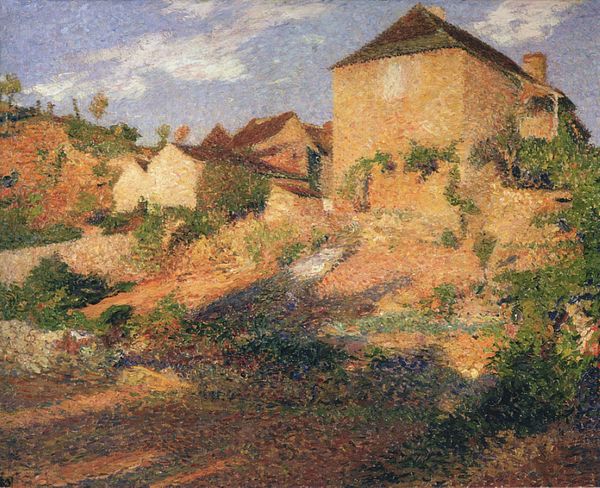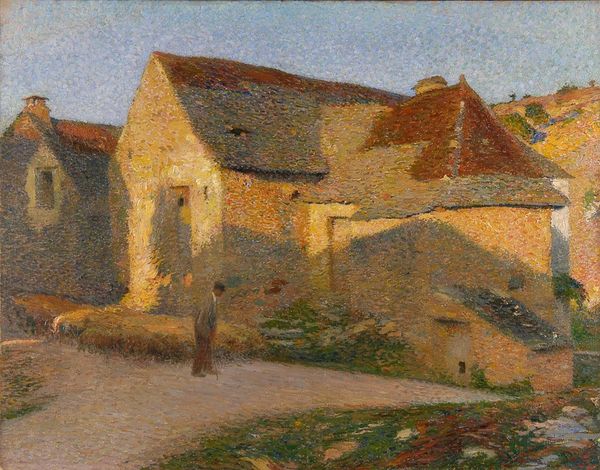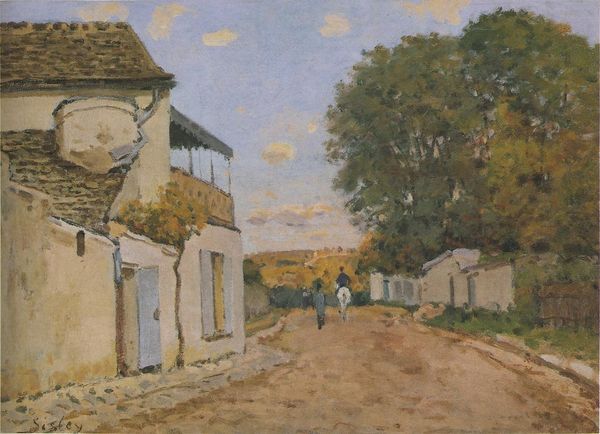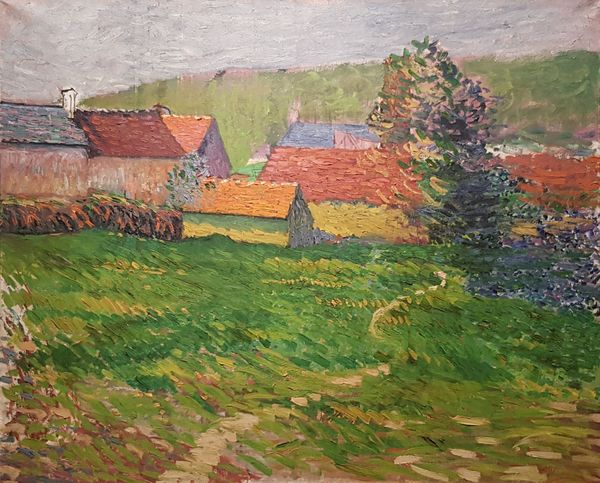
painting, plein-air, oil-paint
#
painting
#
impressionism
#
impressionist painting style
#
plein-air
#
oil-paint
#
landscape
#
impressionist landscape
#
oil painting
#
cityscape
Copyright: Public domain
Curator: Léo Gausson’s oil painting, "Rue de Moustier à Thorigny," completed in 1888, offers a glimpse into the everyday. What strikes you first about it? Editor: A feeling of quietude, of arrested motion. The hazy sky, the muted ochre tones, and the implied meandering path—all converge to create a peaceful stillness. Curator: Precisely. The composition directs our eye along that path, a clear example of linear perspective rendered with Impressionistic brevity. Observe the brushstrokes: broken, yet deliberate, conveying texture without prescribing detail. Editor: That very path calls to mind older processional routes— pilgrimage ways leading to the church—even as this sleepy village scene feels worlds apart from fervent religiosity. Do you notice any faint wagon tracks on the sandy ground? Curator: Indeed. Consider how Gausson employs the complementary contrast of blue and yellow to construct not only spatial depth, but also a certain vibrancy, a play of light across surfaces. The solidity of form dissolves under the cumulative effect of those brushstrokes. Editor: And there at the end of the "pilgrimage" path sits a stone monument in the distance. The composition makes the church, some town residents, and some religious monument appear so commonplace! It brings the divine back down to earth for these people, doesn’t it? Curator: An insightful connection! One could interpret that monument in relation to the tower, of course, but formally, Gausson uses it as a visual stop, almost like a parenthetical remark at the end of the statement delivered by the long road! Editor: Despite its unassuming appearance, Gausson's image resonates deeply with cultural memory. The light feels timeless and symbolic—much more so than it does strictly physical! It highlights enduring images of sacred grounds adapted for every day life in rural France. Curator: Agreed. Looking closely, we find Gausson doing more than merely capturing an optical sensation; he is orchestrating elements for visual impact, demonstrating careful control within apparent spontaneity. Editor: Considering that effect, I would say that is what distinguishes “Rue de Moustier à Thorigny" as an evocative depiction of the French spirit at the fin de siècle.
Comments
No comments
Be the first to comment and join the conversation on the ultimate creative platform.

